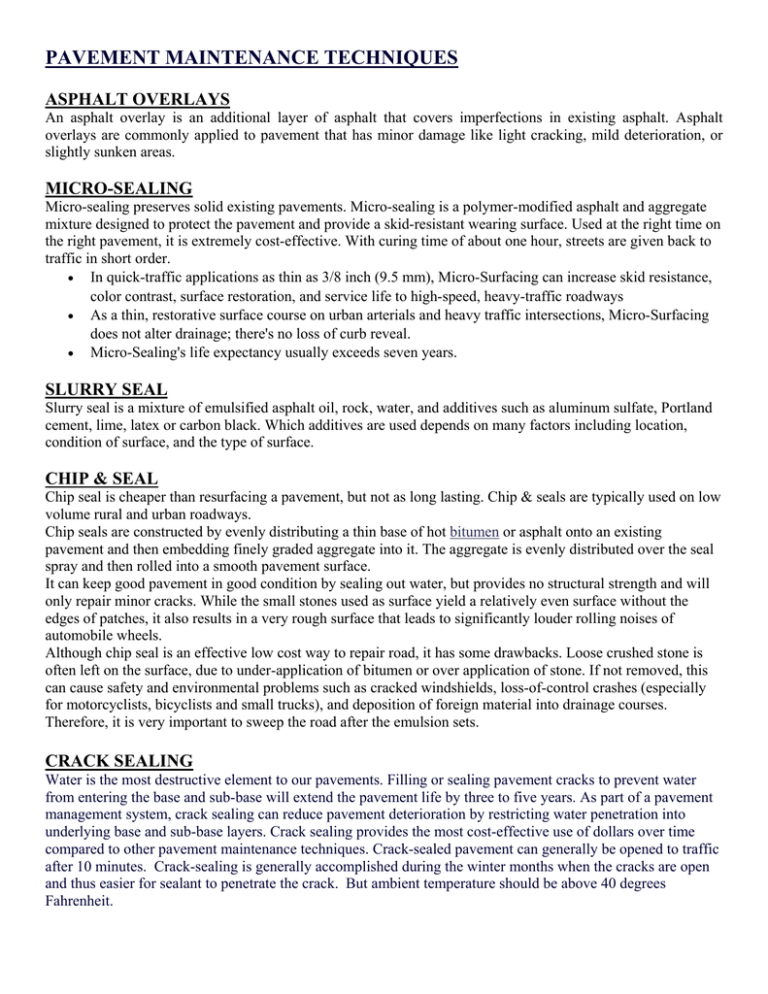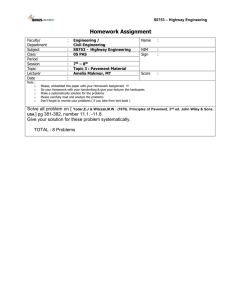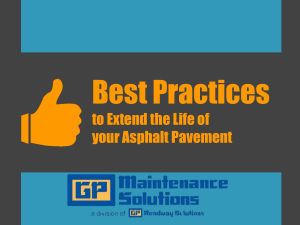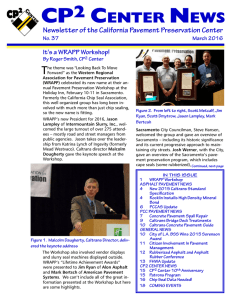asphalt overlays
advertisement

PAVEMENT MAINTENANCE TECHNIQUES ASPHALT OVERLAYS An asphalt overlay is an additional layer of asphalt that covers imperfections in existing asphalt. Asphalt overlays are commonly applied to pavement that has minor damage like light cracking, mild deterioration, or slightly sunken areas. MICRO-SEALING Micro-sealing preserves solid existing pavements. Micro-sealing is a polymer-modified asphalt and aggregate mixture designed to protect the pavement and provide a skid-resistant wearing surface. Used at the right time on the right pavement, it is extremely cost-effective. With curing time of about one hour, streets are given back to traffic in short order. In quick-traffic applications as thin as 3/8 inch (9.5 mm), Micro-Surfacing can increase skid resistance, color contrast, surface restoration, and service life to high-speed, heavy-traffic roadways As a thin, restorative surface course on urban arterials and heavy traffic intersections, Micro-Surfacing does not alter drainage; there's no loss of curb reveal. Micro-Sealing's life expectancy usually exceeds seven years. SLURRY SEAL Slurry seal is a mixture of emulsified asphalt oil, rock, water, and additives such as aluminum sulfate, Portland cement, lime, latex or carbon black. Which additives are used depends on many factors including location, condition of surface, and the type of surface. CHIP & SEAL Chip seal is cheaper than resurfacing a pavement, but not as long lasting. Chip & seals are typically used on low volume rural and urban roadways. Chip seals are constructed by evenly distributing a thin base of hot bitumen or asphalt onto an existing pavement and then embedding finely graded aggregate into it. The aggregate is evenly distributed over the seal spray and then rolled into a smooth pavement surface. It can keep good pavement in good condition by sealing out water, but provides no structural strength and will only repair minor cracks. While the small stones used as surface yield a relatively even surface without the edges of patches, it also results in a very rough surface that leads to significantly louder rolling noises of automobile wheels. Although chip seal is an effective low cost way to repair road, it has some drawbacks. Loose crushed stone is often left on the surface, due to under-application of bitumen or over application of stone. If not removed, this can cause safety and environmental problems such as cracked windshields, loss-of-control crashes (especially for motorcyclists, bicyclists and small trucks), and deposition of foreign material into drainage courses. Therefore, it is very important to sweep the road after the emulsion sets. CRACK SEALING Water is the most destructive element to our pavements. Filling or sealing pavement cracks to prevent water from entering the base and sub-base will extend the pavement life by three to five years. As part of a pavement management system, crack sealing can reduce pavement deterioration by restricting water penetration into underlying base and sub-base layers. Crack sealing provides the most cost-effective use of dollars over time compared to other pavement maintenance techniques. Crack-sealed pavement can generally be opened to traffic after 10 minutes. Crack-sealing is generally accomplished during the winter months when the cracks are open and thus easier for sealant to penetrate the crack. But ambient temperature should be above 40 degrees Fahrenheit. CITY OF OZARK’S DESIGN STANDARD FOR STREETS *Developed in 2006 and periodically updated.





